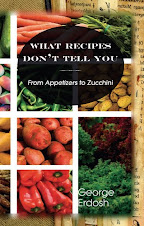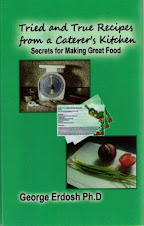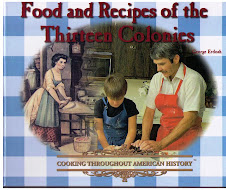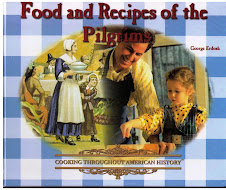Cilantro

Friday, December 4, 2015
BARLEY BREAD
I bake bread every 10 to 12 days, slice them when cool and
freeze the slices double wrapped in heavy freezer plastic bags. When ready to
use, I defrost the slices and they are almost like fresh.
I start with 7 cups flour (about ¾ bread flour and ¼ whole
wheat or rye) and bake either two loaves (close to 3 pounds of bread) or, more
commonly, one large loaf and eight 3-ounce rolls.
I like to add various seeds (often caraway or fennel,
sometimes coarsely crushed black pepper), occasionally wheat berries that I
soak overnight otherwise the berries remain hard in the final bread. At my last
baking project I added cooked barley (about ½ cup barley before cooking), and
the bread turned out especially delicious—rich in flavor and moist but with
good crust.
Try it. You may use either regular or quick-cooking
barley.
Monday, November 23, 2015
THOSE TEMPTING WILD MUSHROOMS
I have been collecting wild mushrooms for a very long time:
first in the mountains east of Salt Lake City where a friend who knew what he
was doing introduced me to wild mushrooms. Then in the Sierra Nevada Mountains
and foothills in Northern California.
I always enjoyed finding something edible in the wilds:
asparagus, berries of all sorts, walnuts and of course, mushrooms. I never
gotten sick from eating the wrong mushroom but I only eat them if I have
virtually 100% positive identification.
Over the decades I learned to recognize the edible ones
without consulting one of my mushroom books. If you are new to wild mushroom
collecting, the only advice any expert collector can give you: don’t unless you
have a death wish. Many mushrooms are mildly poisonous but some are extremely
so. And to make it worse, some of the deadly ones take close to a day to show
symptoms by which time the toxins (amatoxin) absorb and they work on destroying
your liver—you have a little time left to organize you funeral arrangements. But
don’t yet despair: fatality is in only in 50% of people.
Start collecting with a truly knowledgeable person and at
least one very good guidebook. You need to collect them while they are fairly
young to pick them ahead of the almost inevitable maggots. There are mushrooms
maggots leave alone but not many kinds. Collect them in paper bags, never mixing
different species and with a pocket knife scrape off as much dirt as possible.
Don’t ever use plastic bags, mushrooms with their high moisture contents suffocate
and spoil in no time.
Identify them until you are absolutely positive what you
have. It’s always a good idea to leave a small piece preserved before cooking,
just in case of tummy problems crop up later; that way an expert can check your
identification.
Here is a very pretty mushroom called Leucopaxillus,
species is probably albissimus. It is not edible because it is tough and bitter
but not poisonous. But so pretty, so tempting!
Sunday, November 15, 2015
TAHINI MADE IN YOUR KITCHEN
I love to have some baba ganouj in the refrigerator
occasionally.
The eggplant part is easy. After piercing it in a few places
to avoid exploding it in the oven, I roast it at 400 degrees until very soft
inside—this take close to an hour. Then I cut the eggplant in half lengthwise,
and scrape the soft flesh off the skin, dump it into the food processor with
the rest of the ingredients.
The tahini part is more of a problem if you prefer making
your own. Looking at recipes for home-made tahini, many suggest grinding the
toasted sesame seeds with some sesame oil in the food processor—it didn’t work.
From previous experience I’d learned that fine seeds like sesame and poppy seeds
just whirl around by the blade but not ground. For my first attempt I used the
tahini as is without fully grinding the seeds. The resulting baba ganouj didn’t
quite have the correct texture but it was perfectly good.
The only way I know of grinding fine seeds at home is
using a seed grinder. I do have a poppy seed grinder that also works for sesame
seeds but it is a slow, slow process.
Can anyone offer another solution?
Sunday, November 1, 2015
TOMATO JUICE MADE IN YOUR KITCHEN
In my kitchen I like to prepare as much from scratch as
possible, including juices. Orange and grapefruit are easy, just squeeze, and if
the grapefruit is not very sweet, stir in a little sugar.
Tomato juice takes a little more effort. I like V8 juice
a lot, and that’s what I aimed for in my effort to make tomato juice at home but
I like it a little more spice, little more jazzy than the commercial version.
I scanned cookbooks checking tomato juice ingredient suggestions,
and finally decided what seems like a good blend—at least to my taste. The base
is tomato paste that I use a lot in my cooking. Anything left in a six-ounce
can I scrape out, wrap in a plastic cling wrap, then place it in the
freezer—when I need a little tomato paste, the frozen paste is easy to cut
from. The kitchen tool is the blender.
I combine all ingredients in a blender and I have tomato
juice in seconds.
Here is what I combine:
6 oz tomato paste
24 oz water
¾
tsp salt
1 tsp sugar
1 tsp lemon juice or vinegar
1 tsp Worcestershire sauce
½ tsp horseradish
⅛
tsp crushed chili
light sprinkling of smoke flavor (optional)
Thursday, October 15, 2015
PAN-ROASTED PAPRIKA-ONION POTATOES
One of my favorite ways with potatoes takes three cooking
stages and three ingredients—it’s not quick but it’s worth the time spent.
The ingredients are potatoes, onion and paprika and a bit
of oil for pan-roasting roast.
I take a pound of russets, peel and dice them into fairly
large irregular chunks, size of walnuts. I cook them in salted boiling water
for about nine minutes until they are partially cooked but still slightly firm.
I drain the pot and set the potatoes aside.
I chop about half a cup (2 oz) of onion and sauté them
gently in a teaspoon of vegetable oil until just beginning to soften, about
five minutes, and add 2 teaspoons of paprika (it may be smoked paprika). Stir
the paprika into the onion and let gently cook for half a minute so stirring constantly
so the paprika slightly caramelizes.
I remove the onion from the pan and set aside and wipe
the pan clean.
Adding a teaspoon of vegetable oil to the same pan I heat
it until fairly hot and add the potatoes with half teaspoon salt to gently pan-roast
for about 35 minutes, stirring often until the potatoes are browning. You may need
to roast them longer until browned to your taste, and may add a little more oil
as needed.
Just before serving I add the onion to the potatoes, stir
well and continue heating for a few minutes. You have a wonderful side dish
serving four.
Subscribe to:
Posts (Atom)






 Stumble It!
Stumble It!










